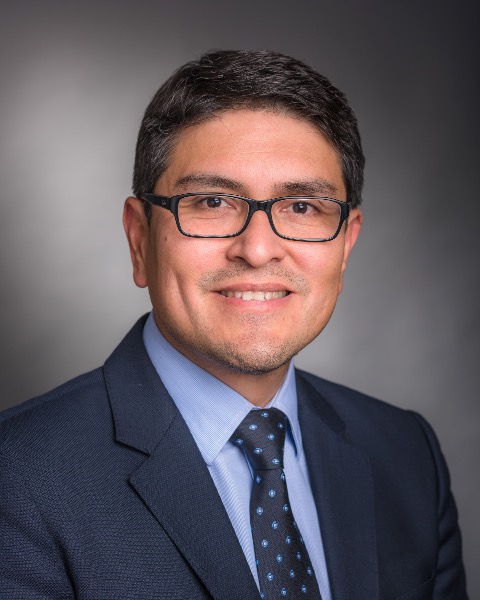Other plasma cell disorders
Poster Session 3
P-424: Partial response or better at 6 months is not shown to be a prognostic indicator of progression-free survival in Waldenström macroglobulinemia treated with acalabrutinib: A post hoc analysis
Friday, September 29, 2023
1:15 PM - 2:15 PM EEST

Jorge J. Castillo, MD (he/him/his)
Associate Professor of Medicine
Dana-Farber Cancer Institute
Boston, Massachusetts, United States
Introduction: Attaining partial response (PR) or better at 6 months was associated with superior progression-free survival (PFS) in patients (pts) with Waldenström macroglobulinemia (WM) treated with ibrutinib (IBR) monotherapy (Castillo et al. Br J Haematol 2020); it could be a surrogate for PFS in prospective clinical trials evaluating Bruton tyrosine kinase inhibitors in WM. This post hoc analysis assessed the PFS prognostic value of attaining PR or better at 6 and 12 months in participants with WM treated with acalabrutinib, a second-generation BTK inhibitor.
Methods: The methodology for the phase II study of acalabrutinib in WM has been described previously (Owen et al. Lancet Haematol 2020). This post hoc analysis evaluated the attainment of PR or better at 6 months and 12 months from therapy initiation. Responses were assessed based on criteria from the 11th International Workshop for WM (Treon et al. Semin Hematol 2023). PFS was estimated starting at the 6-month mark for participants with response assessment at 6 months and the 12-month mark for participants with response assessment at 12 months. Participants who died, progressed, or were not assessed at the landmarks were excluded from the analysis. Since two analyses were performed in the same data set, P-values < 0.025 were considered statistically significant.
Results: At 6 months, response data were available from 94 participants, of whom 60 (64%) attained a PR or better on acalabrutinib. The median PFS was 61.9 months (95% CI 55.7-not reached) in the group that attained a PR or better versus not reached (95% CI 35.6 months-not reached) in the group that did not. The hazard ratio (HR) was 0.70 (95% CI 0.35-1.40; p=0.31; Figure, left). At 12 months, response data were available from 87 participants, 59 (68%) attained a PR or better. The median PFS was not reached (95% CI 50.1-not reached) in the group that attained a PR or better versus not reached (95% CI 30.1 months-not reached) in the group that did not. The hazard ratio (HR) was 0.61 (95% CI 0.29-1.30; p=0.20; Figure, right).
Conclusions: This post hoc analysis supports attaining PR or better at 6 months as a numerically, though not a statistically, positive prognostic factor for PFS in patients with WM treated with acalabrutinib. This analysis, however, is underpowered, given the sample size and immature follow-up.
Methods: The methodology for the phase II study of acalabrutinib in WM has been described previously (Owen et al. Lancet Haematol 2020). This post hoc analysis evaluated the attainment of PR or better at 6 months and 12 months from therapy initiation. Responses were assessed based on criteria from the 11th International Workshop for WM (Treon et al. Semin Hematol 2023). PFS was estimated starting at the 6-month mark for participants with response assessment at 6 months and the 12-month mark for participants with response assessment at 12 months. Participants who died, progressed, or were not assessed at the landmarks were excluded from the analysis. Since two analyses were performed in the same data set, P-values < 0.025 were considered statistically significant.
Results: At 6 months, response data were available from 94 participants, of whom 60 (64%) attained a PR or better on acalabrutinib. The median PFS was 61.9 months (95% CI 55.7-not reached) in the group that attained a PR or better versus not reached (95% CI 35.6 months-not reached) in the group that did not. The hazard ratio (HR) was 0.70 (95% CI 0.35-1.40; p=0.31; Figure, left). At 12 months, response data were available from 87 participants, 59 (68%) attained a PR or better. The median PFS was not reached (95% CI 50.1-not reached) in the group that attained a PR or better versus not reached (95% CI 30.1 months-not reached) in the group that did not. The hazard ratio (HR) was 0.61 (95% CI 0.29-1.30; p=0.20; Figure, right).
Conclusions: This post hoc analysis supports attaining PR or better at 6 months as a numerically, though not a statistically, positive prognostic factor for PFS in patients with WM treated with acalabrutinib. This analysis, however, is underpowered, given the sample size and immature follow-up.
